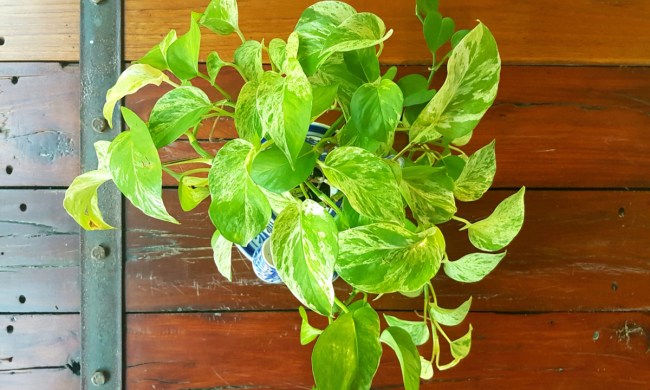Around Easter, fresh spring flowers make for cheerful centerpieces and sweet gifts for loved ones. There are many bright, colorful flowers and plants to choose from when it comes to picking out the perfect ones to pair with your painted eggs or chocolate bunnies!
If you’re curious about furnishing your home or landscape with flowers around Easter, you might experience choice paralysis when trying to decide. Below, we’ve rounded up the most popular Easter flowers and we break down their care requirements to help you find the perfect blooms for your space.
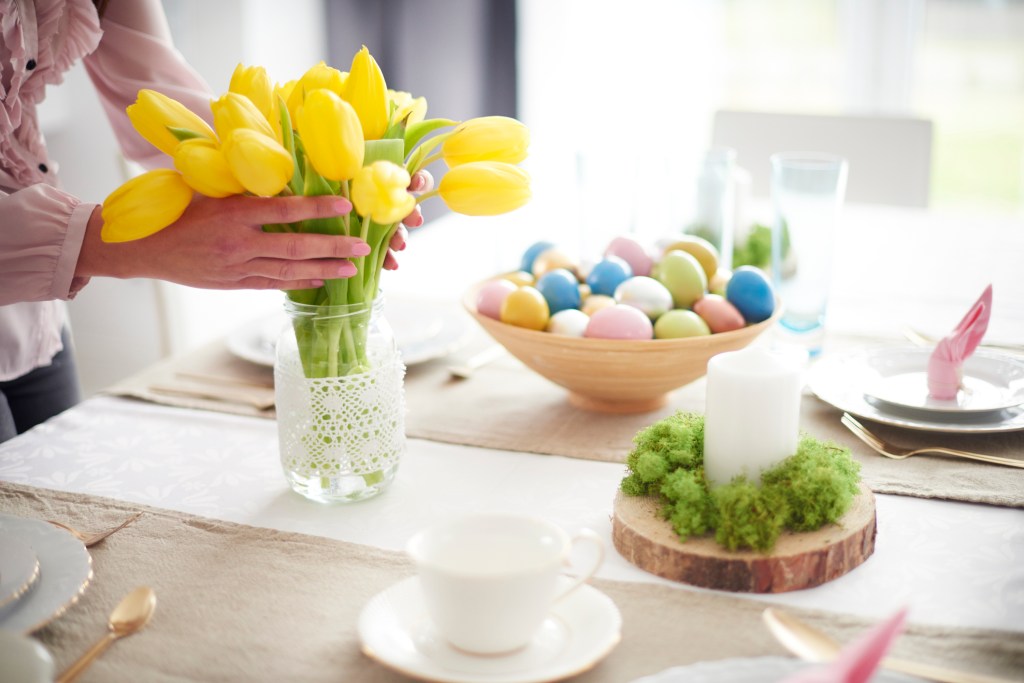
1. Tulips
Vibrant and available in virtually every color, tulips are spring staples that are as ubiquitous as the Easter bunny. Gardeners tend to plant tulips in the fall, but nurseries also sell them as potted bulbs around springtime. If you have potted bulbs, keep them in a bright, cool area of your home and water them only when the soil dries out. After the leaves die back, you can dig up the bulbs and save them for fall planting.

2. Easter lilies
With their white, trumpet-like blooms and fresh fragrance, Easter lilies make for great springtime flowers to have around. Lilies usually bloom during the summer, but you can force them to flower just in time for Easter. You’ll sometimes find Easter lilies as potted plants in stores, and if you buy one of these pots, remove the decorative foil and give your plant bright indirect light indoors. Easter lilies don’t transplant well, so consider growing them from a bulb if you want them outside, or keep a pot in your garden.
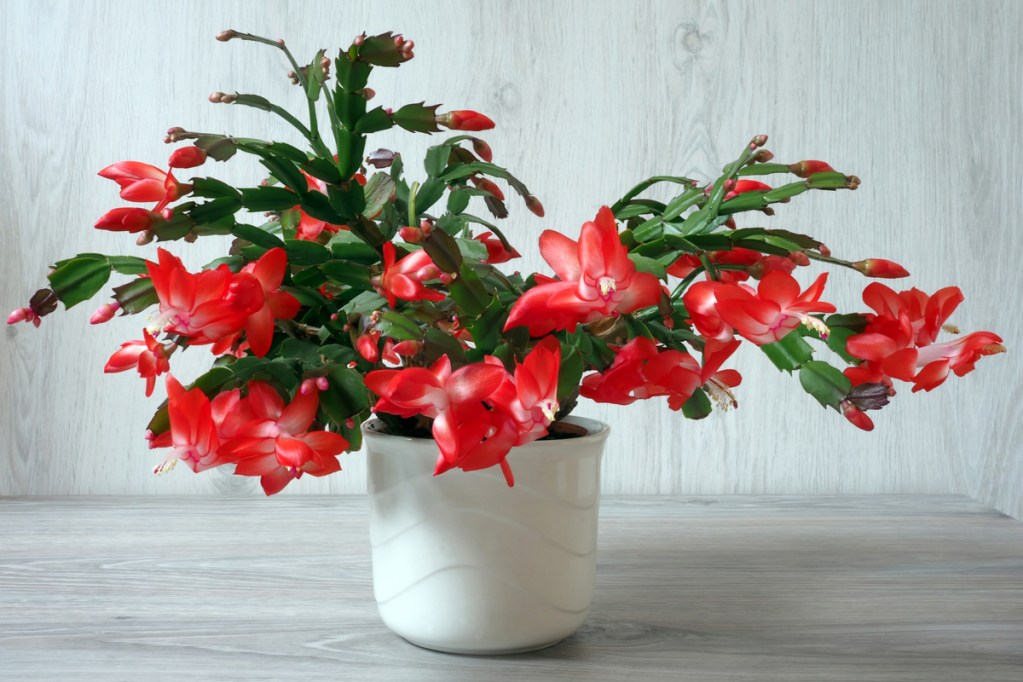
3. Easter cacti
Closely related to Christmas cacti, Easter cacti are easy-going trailing succulents with vibrant blooms that can be white, red, orange, pink, or purple. While Christmas and Thanksgiving cacti put out flowers during the winter holidays, Easter cacti produce flower blooms in February or later. Another point of contrast is that the Easter variety has rounded edges. Provide Easter cacti with humidity and water the soil thoroughly. Though technically succulents; these plants do best with bright indirect sunlight, as direct sunlight can burn the fleshy leaves.
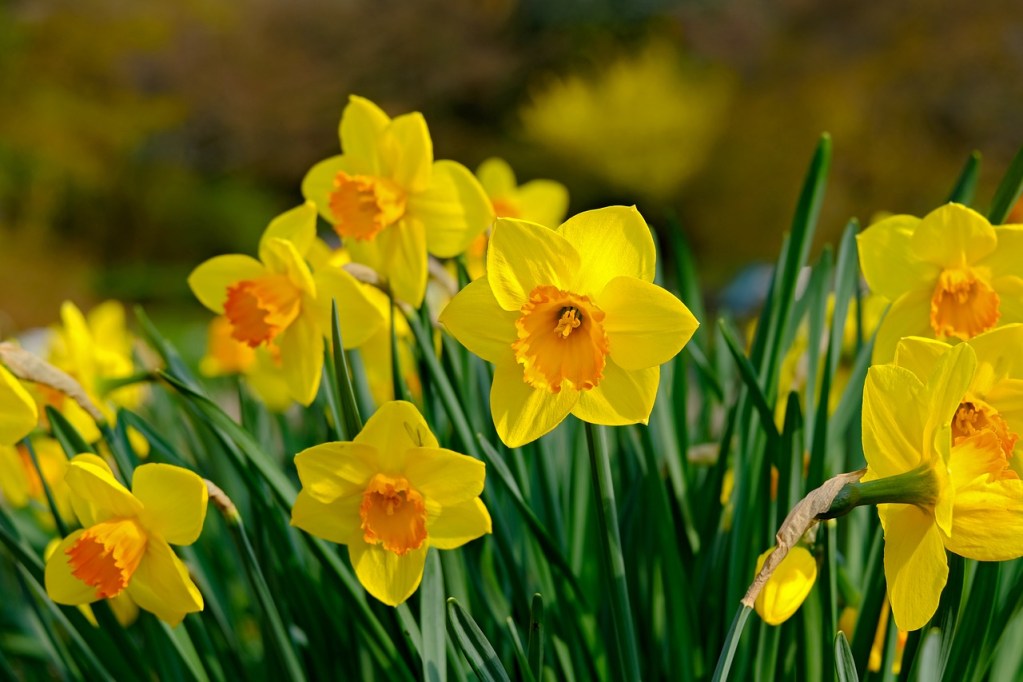
4. Daffodils
Cheerful yellow daffodils are perfect for ushering in spring sunshine come Easter. Daffodils do best when you plant them in the ground before a freeze in the autumn. However, you’ll find potted daffodils around Easter. With these, water the soil well and keep the flowers out of direct sunlight.

5. Orchids
When it comes to orchids, you won’t find a shortage of purples and whites, which are traditional colors for Lent and Easter. Potted orchids are relatively easy to find at grocery stores and nurseries around spring. They make for elegant houseplants with their thick leaves and delicate flower spikes. Though notorious for being finicky plants, they stay happy with bright indirect light and ample humidity. You won’t need to fertilize your orchids when they’re blooming, but they can benefit from plant food when they’re actively growing.
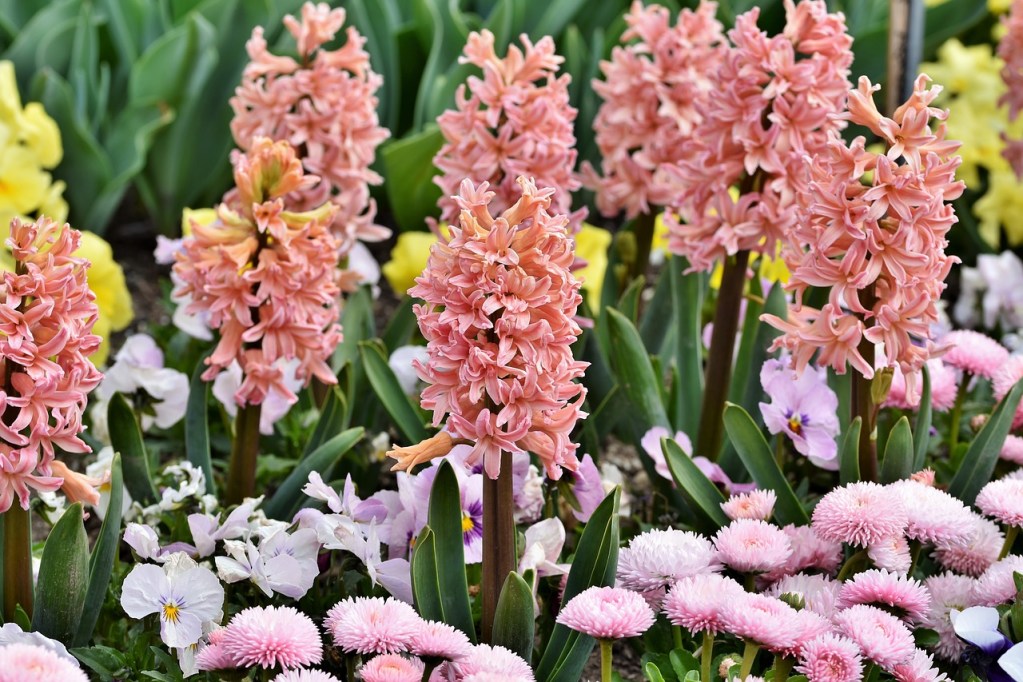
6. Hyacinths
Sweetly fragrant hyacinths with spikes of tubular blooms are perfect for adding texture to cottage gardens for Easter. Though generally blue or purple, they are available in other colors. When grown from bulbs, they’re often prechilled and planted in the ground around fall. However, garden centers also sell them as prechilled bulbs in pots or water vases. Hyacinths do best outside in full sun, but can tolerate partial shade. They appreciate a well-watered but well-draining medium when kept outdoors.
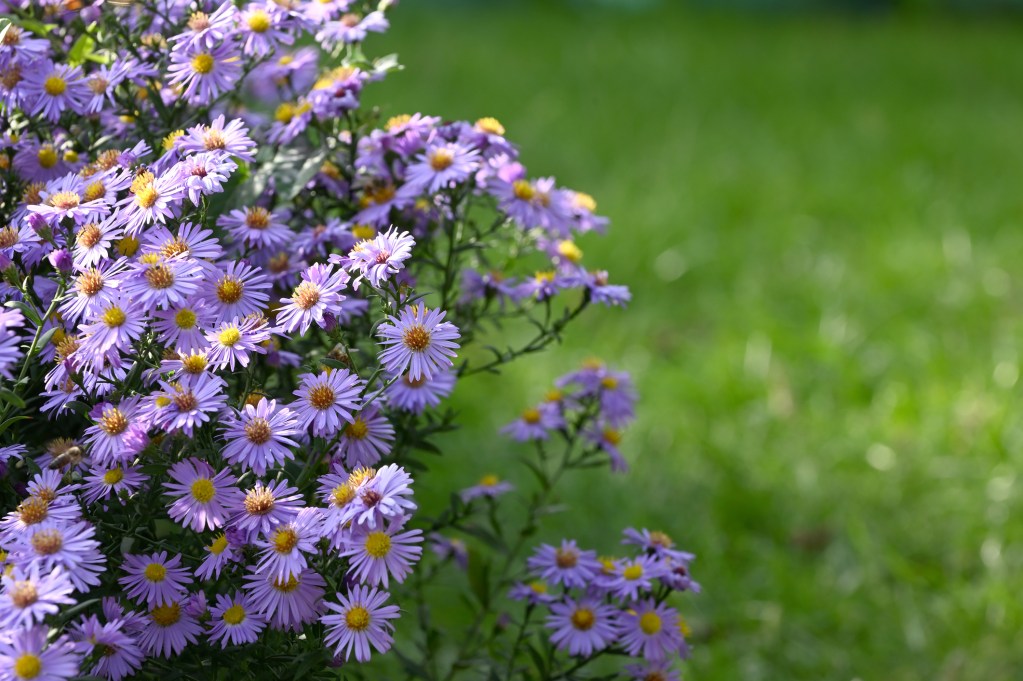
7. Easter daisies
One of the smallest varieties of daisies, Easter daisies can add whimsical pops to gardens with rock landscaping or otherwise grittier soil. You can enjoy their flowers for a few months after Easter as long as you give them adequate sunlight and consistent watering. What gardeners love about Easter daisies is that they’ll attract bees to help with pollination.
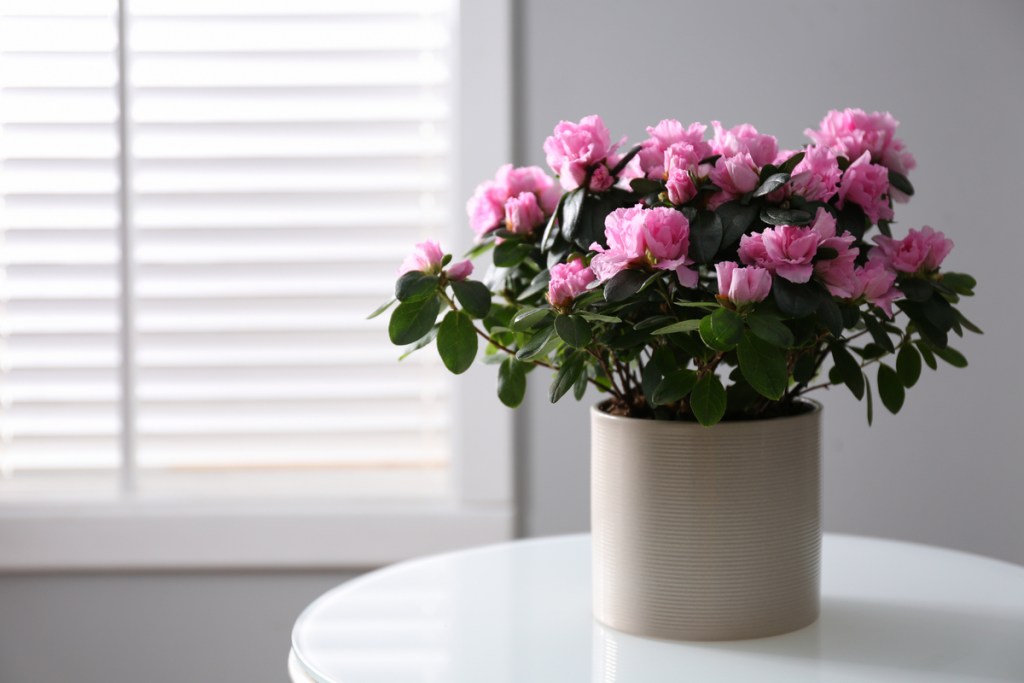
8. Azaleas
Popular during Easter and Mother’s Day for their long-lasting, funnel-shaped flowers, potted azaleas thrive in cool temperatures. They do best when transplanted outdoors in an area with partial shade and slightly acidic soil, but you can leave them inside as long as you keep their soil adequately moist.

9. Lily of the valley
Lily of the valley flowers feature dainty, bell-shaped white blooms that fit in perfectly with Easter décor. One stem can reach up to 1 foot tall and bear 15 flowers at a time. Though delicate in appearance, lily of the valley flowers make for hardy ground covers in shady spots as long as they don’t have to deal with a dry, hot environment. Though commonly garden plants, they’re increasingly found in bouquets for weddings and holidays.
This Easter, skip the fake flowers and freshen up your home with beautiful, fragrant blooms. Real flowers can add cheer to your living room, patio, or garden as long as you balance their needs for water, shade, and well-draining soil. Whether you love a hardy Easter cactus or a more delicate orchid, you can find just the right bloom for your space this spring.


